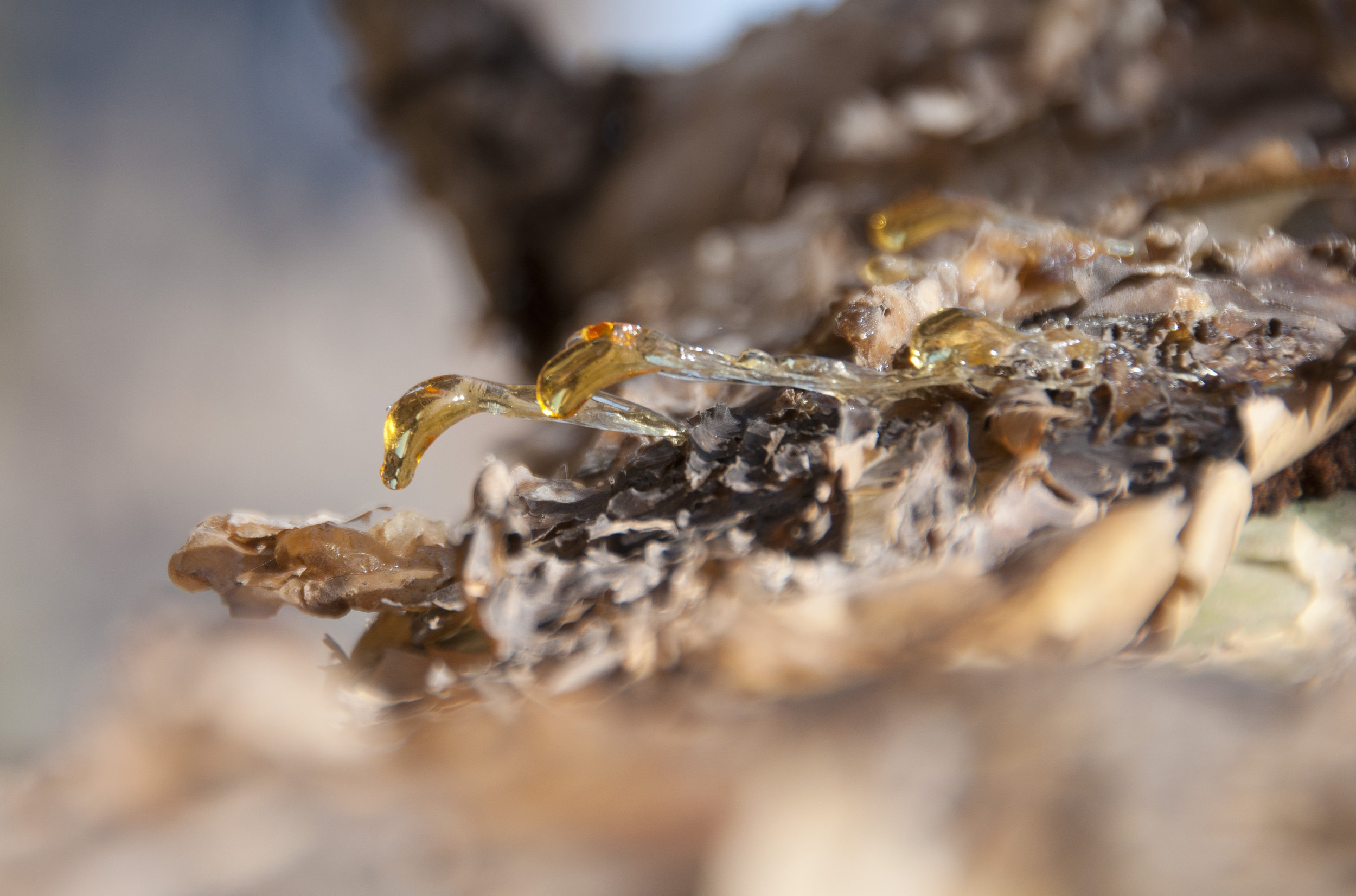Dragon Blood
(Dracaena cinnabari)
Dracaena cinnabari tree damaged by tropical storm.
It was used as a dye, painting pigment, and medicine (respiratory and gastrointestinal problems) in the Mediterranean by Greeks, Romans, and Arabs.
Dracaena cinnabari, or dragon blood tree, is an evergreen tree native to the Socotra archipelago, part of Yemen, located in the Arabian Sea, locally known as brothers’ blood tree (based on the legend that its bloody sap is from blood of Adam son killed by his brother). It’s dark red sap what made its name.
Other plant species red extract falsely named after Dragon blood include; Croton, Daemonorops, Calamus rotang and Pterocarpus.
It has a characteristic upright held umbrella shape. Unlike most monocot plants, Dracaena displays secondary growth, Dracaena cinnabari even has growth zones like tree rings of dicot tree species. Along with other arborescent Dracaena species it has a distinctive growth habit ; "dracoid habitus".Its leaves are found only at the end of its youngest branches; its leaves are all shed every 3 or 4 years before new leaves simultaneously mature. Branching tends to occur when the growth of the terminal bud is stopped, due to either flowering or traumatic events.
Its fruits are small fleshy berries containing between 1 and 4 seeds. As they develop they turn from green to black, then become orange when ripe.
Dragon's blood is one of the renowned traditional medicines used in different cultures of world. It has got several therapeutic uses: haemostatic, antidiarrhetic, antiulcer, antimicrobial, antiviral, wound healing, antitumor, anti-inflammatory, analgesic, antioxidant, etc.
Dracaena cinnabari tree.
Dragon blood sap, Socotra island, Yemen
Dragon blood resin oozing from tree cut.
A study on oral toxicity of the DC resin methanol extract taken from the perennial tree Dracaena cinnabari was performed on female Sprague Dawley rats. Acute and sub-acute oral toxicity tests found that the extract could be tolerated up to 2,000 mg/kg body weight and was labeled as a Category 5 in the toxicity rating.
Another laboratory animal (Spradgue Dawley rats) invivo study demonstrated tolerability of Dragon Blood resin methanol extract administered daily for 28 days up to 1500 mg/kg dose.
The traditional oral dosage is 5 to 10 drops of the sap in water, once to twice per day for 5 days.
Methanolic extract of Dracaena cinnabari leaves and fruits has Anti-influenza virus-A (IC50*: 1.5 µg/mL) and Anti-HSV-1 (IC50 12.5 µg/mL) properties.
* IC50: 50% inhibitory concentration.
It has as well a strong antifungal activity, especially against Microsporum gypseum and Trichophyton mentagrophytes besides antioxidant activities.
Prevention of oral carcinogenesis in rats by Dracaena cinnabari resin extracts has been shown in another invivo laboratory rat study.
Dragon Blood resin
Dragon Blood Antiprotozoal and cytotoxicity activity
Plasmodium falciparum; The deadliest species of Plasmodium that cause malaria in humans. (P. falciparum resistant to Quinone were used in the study)
Leishmania infantum; cause infantile visceral leishmaniasis in the Mediterranean region and Latin America. It can cause cutaneous leishmaniasis as well.
Trypanosoma cruzi; Trypanosomes characteristically bore tissue in another organism and feed on blood and also lymph. It causes American Trypanosomiasis (also known as Chagas Disease).
Trypanosoma brucei; Carried by genera of tsetse fly in sub-Saharan Africa,T. brucei causes African trypanosomiasis, or sleeping sickness.





